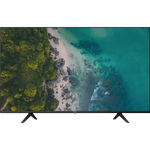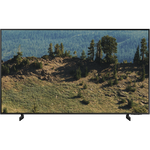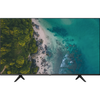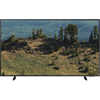A comparison of specs, key information, reviews, and best pricing from top retailers
Last updated -- hours ago | Report incorrect information
What we think

The PerfectRec TV team Learn more
Updated January 12, 2024·
If you often watch movies in a dark room, the Hisense U6G offers better picture quality because of its superior contrast ratio and full-array local dimming feature. For gaming, the Hisense U6G provides a better experience due to its lower input lag and higher refresh rate. However, if you frequently watch TV in a bright room, the Samsung AU8000 has better reflection handling and is brighter, which may make it a better choice. Keep in mind the Hisense U6G is usually a bit cheaper than the Samsung AU8000, allowing for budget savings without a significant compromise in overall quality. Give Feedback
this description is based on the product variant with some specs and product variant with some specs. At the time of writing, the variant with some specs cost some dollars and the variant with some specs cost some dollars.
Advantages of the Hisense U6G (LCD)
- Good for bright room
- Good for dark room
- Good for movies & TV
- Very good for news, talk, & other TV
- Very good for cartoons & animation
Advantages of the Samsung AU8000 (LCD)
- Good reflections
Key differences
Picture Quality
7.7


6.6
7.25/10
CONTRAST
6.71/10
8.1/10
COLOR VOLUME SCORE
6.3/10
LED FALD
PANEL TYPE
LED
VA
PANEL SUB-TYPE
VA
The Hisense U6G (LCD) has good picture quality, while the Samsung AU8000 (LCD) has only fair picture quality.
Movies & TV
7.6


5.9
7.25/10
CONTRAST
6.71/10
7.7/10
BLACK UNIFORMITY
6.9/10
7.5/10
UPSCALING
7.5/10
Yes
HDR10 SUPPORT
Yes
Yes
HDR10+ SUPPORT
Yes
Yes
DOLBY VISION SUPPORT
No
The Hisense U6G (LCD) is good for movies & TV, while the Samsung AU8000 (LCD) is poor.
Gaming
6.8


5.8
7.8/10
RESPONSE TIME SCORE
5.9/10
10.0/10
INPUT LAG SCORE
10.0/10
2.5/10
MOTION PROCESSING
6.0/10
70.0/100
GAMING LOCAL DIMMING
0.0/100
7.2/10
GAME HDR BRIGHTNESS SCORE
5.8/10
The Hisense U6G (LCD) is only fair for gaming, while the Samsung AU8000 (LCD) is poor.
The Hisense U6G has a better response time compared to the Samsung AU8000, which means it can render fast-moving images with less blur, making it more suitable for gaming. Both TVs have low input lag which is good for gaming responsiveness; however, the AU8000 falls short in response time, affecting fast-paced gaming performance.
Cartoons & Animation
8.0


6.9
7.6/10
COLOR GAMUT SCORE
6.1/10
8.1/10
COLOR VOLUME SCORE
6.3/10
8.4/10
SDR BRIGHTNESS SCORE
7.1/10
6.9/10
COLORS OUT OF THE BOX SCORE
7.2/10
7.2/10
GRAY UNIFORMITY
6.8/10
The Hisense U6G (LCD) is very good for cartoons & animation, while the Samsung AU8000 (LCD) is only fair.
The Hisense U6G is better equipped for cartoons and animation due to its superior color gamut, which offers a wider range of colors, enhancing the vibrancy and variety needed for animated content. In contrast, the Samsung AU8000, while also suitable for general viewing, presents colors and shades not as richly, resulting in less dynamic and vivid animated imagery.
News, Talk, & Other TV
8.1


6.7
8.4/10
SDR BRIGHTNESS SCORE
7.1/10
7.5/10
UPSCALING
7.5/10
The Hisense U6G (LCD) is very good for news, talk, & other TV, while the Samsung AU8000 (LCD) is only fair.
The Hisense U6G provides better performance for news and talk shows due to its very good upscaling of lower resolution content and higher SDR brightness, which ensures clear visibility even in well-lit rooms. In comparison, the Samsung AU8000 offers fair performance, with decent upscaling and a good SDR brightness that may not be as effective in bright conditions, and lacks local dimming which can affect contrast and depth in the picture.
Bright Room
7.3


6.3
5.4/10
VIEWING ANGLE
5.5/10
8.4/10
SDR BRIGHTNESS SCORE
7.1/10
7.0/10
HDR BRIGHTNESS SCORE
5.7/10
6.3/10
REFLECTIONS SCORE
7.8/10
The Hisense U6G (LCD) is good for bright room, while the Samsung AU8000 (LCD) is only fair.
The Hisense U6G outperforms the Samsung AU8000 in bright room viewing primarily because it has better SDR and HDR brightness, which means it can produce brighter images to combat glare. Additionally, even though the Hisense U6G only has fair reflection handling compared to the good score of the Samsung AU8000, its higher brightness levels more than compensate for this difference, making it more suitable for well-lit environments.
Cost
$498


$648
$200
$400
$600
$800
$1,000
The Hisense U6G (LCD) has a price of $498 and the Samsung AU8000 (LCD) costs $648.

Let Us Help Find Your Perfect TV
Find your new TV
Key similarities
Sports
6.1


6.5
2.5/10
MOTION PROCESSING
6.0/10
60Hz
REFRESH RATE
60Hz
10.0/10
INPUT LAG SCORE
10.0/10
7.5/10
UPSCALING
7.5/10
8.4/10
SDR BRIGHTNESS SCORE
7.1/10
Yes
HLG SUPPORT
Yes
The Samsung AU8000 (LCD) and Hisense U6G (LCD) are both only fair for sports.
The Hisense U6G performs well in response time which is great for watching fast-paced sports, but the viewing angle is limited, so it's not ideal when watching with a large group spread across the room. The Samsung AU8000, while it handles reflections better than the Hisense U6G, has a poorer response time, making fast-moving sports scenes look less smooth.
Give feedback
We’re constantly working to improve.
How the Hisense U6G (LCD) and the Samsung AU8000 (LCD) compare to other TVs
Spec Comparison
| Hisense U6G (LCD) | Samsung AU8000 (LCD) |
GENERAL | |||
|---|---|---|---|
| Price | |||
$498 | $648 | ||
Brand | |||
Brand | Hisense | Samsung | |
Release Date | |||
Release Date | May 3, 2021 | March 4, 2021 | |
Full name | |||
Full name | 65U6G | UN65AU8000 | |
Screen Size | |||
Screen Size | 65" | 65" | |
Screen Resolution | |||
Screen Resolution | 4K | 4K | |
TV FEATURES | |||
|---|---|---|---|
Operating System | |||
Operating System | Android TV | Tizen | |
Sound Quality Score | |||
Sound Quality Score | 6.9/10 | 6/10 | |
NextGen Ready | |||
NextGen Ready | No | No | |
HDMI Ports | |||
HDMI Ports | 4 | 3 | |
Coax Ports | |||
Coax Ports | 1 | 1 | |
DISPLAY QUALITY SCORES | |||
|---|---|---|---|
Picture Quality Score | |||
Picture Quality Score | 7.7/10 | 6.6/10 | |
Bright Room Score | |||
Bright Room Score | 7.3/10 | 6.4/10 | |
Gaming Score | |||
Gaming Score | 6.9/10 | 5.8/10 | |
Movies & TV Score | |||
Movies & TV Score | 7.7/10 | 5.9/10 | |
Sports Score | |||
Sports Score | 6.1/10 | 6.5/10 | |
PHYSICAL | |||
|---|---|---|---|
Dimensions w/o Stand (H x W x D) | |||
Dimensions w/o Stand (H x W x D) | 32.9" x 57" x 3.1" | 32.7" x 57.1" x 1" | |
Dimensions with Stand (H x W) | |||
Dimensions with Stand (H x W) | 35.5" x 57" | 34.4" x 57.1" | |
Weight without Stand | |||
Weight without Stand | 43.0 lbs | 46.1 lbs | |
VESA Mount | |||
VESA Mount | 300 x 200 | 400 x 300 | |
DISPLAY | |||
|---|---|---|---|
Color Depth | |||
Color Depth | 10 bit | 10 bit | |
Black Frame Insertion | |||
Black Frame Insertion | Yes | Yes | |
Auto Low Latency Mode | |||
Auto Low Latency Mode | Yes | Yes | |
Contrast | |||
Contrast | 7.3/10 | 6.7/10 | |
Local Dimming | |||
Local Dimming | 6.5/10 | 2.5/10 | |
SOUND | |||
|---|---|---|---|
Speaker Setup | |||
Speaker Setup | 2.0 | 2.0 | |
Speaker Power | |||
Speaker Power | 20 W | 20 W | |
Dolby Atmos | |||
Dolby Atmos | Yes | Bypass only | |
DTS:X | |||
DTS:X | Up to DTS Digital Surround, Bypass only | No | |
Shopping
Samsung AU8000 (LCD)
See more
Dig into reviews and images
USA Today
Michael Desjardin | April 2023
"To put it directly: you’d never see a mid-range 4K TV hitting this black levels half a decade ago. AU8000 plays the part of a higher-end TV thanks to its sleek design. If you’re upgrading to a smart TV for the first time, the software is a great way to dip your toes in the streaming water."
Get a great deal on the Hisense U6G (LCD) or the Samsung AU8000 (LCD)
About Hisense
Hisense, a Chinese TV manufacturer, entered the US market in approximately 2011 and has since acquired TV divisions from various companies such as Toshiba, Sharp, Hitachi, and NEC. Currently ranking as the fourth largest vendor in terms of sales volume, Hisense aims to capture a wide range of TV budget segments. They offer exceptional value with TVs that often outperform their competitors at similar price points, making them a compelling choice for consumers. In the US, they use Google TV as their smart TV software which provides the largest app selection and a very modern user interface, however it is not as user friendly as the software from other vendors.
About Samsung
Samsung, a South Korean electronics manufacturer, holds the title of being the largest global TV vendor in terms of units sold. They offer a diverse lineup of TV products that cater to various budget ranges. A notable achievement in recent years is the development of Quantum Dots, a technology that enhances color reproduction, resulting in richer and more vibrant hues. Samsung TVs are well-regarded for their high manufacturing quality and user-friendly software, making them an excellent choice for consumers seeking an intuitive viewing experience.
Give feedback
We're constantly perfecting our model
TV guides you might be interested in
More comparisons for you
FAQs
FAQs about TVs
Why trust us
This information was produced and vetted by the PerfectRec TVs team. We are a product research and recommendation organization that meticulously reviews and evaluates the latest TV information and makes it digestible for you.
By the numbers
385
TVs evaluated
33,110
TVs stats compiled
21
Proprietary TVs ratings developed
121,830
Recommendations made
18,275
Consumer hours saved
About the TV team
Joe Golden, Ph.D
CEO and TVs Editor
Joe is an entrepreneur and lifelong electronics enthusiast with a Ph.D in Economics from the University of Michigan.
Jason Lew
Staff Expert & Software Engineer
Jason is a staff expert and software engineer that has been making laptop recommendations for 7 years and moderates one of the largest laptop subreddits.
Chandradeep Chowdhury
Staff Expert & Software Engineer
Chandradeep is a staff expert and software engineer and expert in televisions and monitors. He’s been making monitor recommendations for ten years.
Jaime Roldán
TVs Expert
Jaime is a Colombia-based TV expert. He is an electronics engineer with 8 years of experience in the telecom sector and has been making TV recommendations for 12 years.







